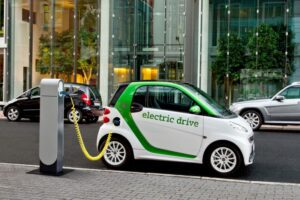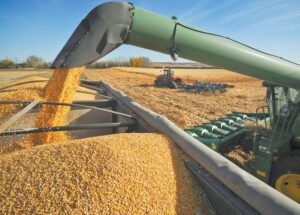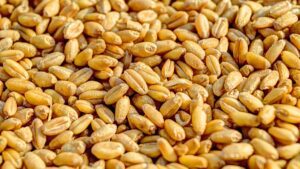
The issue of the right of Ukrainians to own weapons for their own defense should be resolved after taking into account all the weapons that they now have – to think through everything step by step to avoid complicating the crime situation, said the head of the National Police Igor Klymenko.
In an exclusive interview with Interfax-Ukraine, commenting on the results of the survey, which showed the demand of Ukrainians for possession of weapons to protect themselves and their families, Klymenko emphasized the need to “separate military operations and peaceful life.”
“When the full-scale war of the Russian Federation in Ukraine began, the right, in my opinion, decision was made to arm our citizens. This made it possible to stop the enemy and be in relative safety for those who were at some distance from the line of military clashes,” the head said. National Police.
At the same time, he added that Ukrainians are returning to the de-occupied territories, the country is trying to return to peaceful life.
“Since the beginning of hostilities, only criminal investigation officers have seized more than a thousand firearms, more than 100 grenade launchers and 350 thousand ammunition from illegal circulation. Thousands of weapons in their hands can pose a threat to the lives of peaceful and law-abiding citizens,” the head of the National Police stressed.
“So, everything must first be returned to the warehouses, taken into account or blown up, as explosive experts do, and then we return to the issue of weapons possession. That is, first of all, we must take into account all the weapons that our citizens currently have” , – expressed the opinion of Klimenko.
According to him, the police in the first days of the invasion issued about 18 thousand weapons, they were taken into account, and the military also took into account the weapons they issued. “But there are a lot of captured weapons, of unknown origin, ammunition,” the head of the National Police added.
Klymenko also pointed out that the criminal world, which “quieted a little” at the beginning of the war, will be active again, and crime will rise to the level of peacetime.
He summed up: “Therefore, there should be a step by step: first, a register to understand how many weapons are on hand, who has them. And only after that we can talk about what weapons, what caliber and what class should be in the hands of our citizens – be it a machine gun, a carbine or a pistol.”

Interest in electric vehicles in Ukraine in May (according to users’ responses to announcements) against the backdrop of a shortage of gasoline and diesel grew 7 times compared to May last year, for electric scooters and gyro scooters – three times, for the purchase of electric scooters – 4.7 times, according to the press service of the online service OLX.
“In April, Ukrainians faced a shortage of gasoline and diesel, and since then they have been increasingly asking for “green” modes of transport,” the company said in a press release on Monday.
The supply also increased – if at the end of April sellers offered 226 electric cars and 114 hybrids, then in May the number of such ads increased by almost 3.6 and 4.7 times, respectively.
According to the response to one ad in May, Ukrainians were most interested in Opel – almost 11 potential buyers per electric car, Renault and Nissan received an average of eight responses.
A jump in demand, according to OLX Auto, for motorcycles, scooters and scooters was noted from May 23 to May 29, and the most interested in offers were in Kyiv, Odessa and Lviv regions.
At the same time, 127.6 thousand times responded to advertisements for the sale of an electric scooter or gyro scooter in May (4.7 times more than for electric scooters and 46.5 times for electric motorcycles), the leader in demand is the Kyiv region, followed by Lviv and Odessa.
Earlier, the association “Ukravtoprom” in its telegram channel reported that in May, against the backdrop of the fuel crisis, the Ukrainian fleet of electric vehicles (passenger cars and commercial vehicles) grew by 63% by May 2021 – up to 1016 cars (the best figure since the beginning of the year), with the share of new ones rose to 28% against 11% in May last year.
Of the registered 984 units. new passenger electric cars amounted to 287 units. – 67% more than in May last year, and among 32 units. there were no commercial new ones.
In total, in January-May, 3,090 electric vehicles were registered in Ukraine for the first time, which is 2.5% more than a year earlier (the share of new ones is 20%), and Nissan Leaf remains the most popular (567 cars).
TESLA Model 3 is in second place (263 units), Volkswagen e-Golf is third (156 units).
The RENAULT Kangoo Z.E remains the market leader in commercial electric vehicles. – 77 registrations.

Grain harvest in Ukraine in 2022 will be approximately 65 million tons, including up to 50 million tons of grains and 15-15.3 million tons of oilseeds, which is less than the record previous year, but comparable to the harvests harvested in the country in the current decade.
“Maybe about 48-50 million tons of grain in total. Of course, this is less than in previous years, when we are used to 60-75-85 million tons, but if we take a ten-year history, when we had 40-45 million , then this is not critical,” First Deputy Minister of Agrarian Policy and Food Taras Vysotsky said on the air of the national UA-marathon on Monday.
He specified that this season’s corn harvest is expected to be about 24 million tons, 18-20 million tons of wheat, and about 5 million tons of barley.
According to Vysotsky, it is also expected to produce about 10 million tons of sunflower, 2.5-2.8 million tons of soybeans and about 2.5 million tons of winter rapeseed.
“These are average indicators, looking at the average statistical indicators of previous years, and we will correct them upon the fact of harvesting,” the deputy minister specified.
As reported, the U.S. Department of Agriculture (USDA), in a report published last week for June, raised its forecast for Ukrainian corn crop this year by 5 million tons compared to a month ago forecast – up to 25 million tons, while maintaining export estimates at 9 million tons.
In early June, the Ukrainian Grain Association (UGA) increased the forecast for grain and oilseeds harvest in Ukraine this season by 5.2% compared to the April forecast of 63 million tons – up to 66.5 million tons.
According to UGA forecasts, in 2022, a wheat harvest is expected at the level of 19.2 million tons (+5.2% compared to the April forecast of the organization); 26.1 million tons of corn (+13%); 6.6 million tons of barley (+6%); 9 million tons of sunflower (-8.8%); 2.1 million tons of soybeans (+16.6%); 1.5 million tons of rapeseed (forecast kept).

The U.S. Department of Agriculture (USDA) in its report for June published on Friday increased the forecast for Ukrainian corn crop for trade year (TY) 2022/23 by 5 million tonnes compared to the forecast a month ago, to 25 million tonnes, while keeping the export estimate at the level of 9 million tonnes.
U.S. experts increased the forecast for carryovers for 2022/23 TY by 4 million tonnes, to 12.07 million tonnes compared to 6.77 million tonnes for 2021/22 TY.
In addition, USDA raised the estimate of domestic consumption in 2022/23 TY by 1.5 million tonnes, to 10.7 million tonnes.
According to the report, in general, the forecast for the feed grain harvest in Ukraine for 2022/23 TY has been increased by 5.2 million tonnes, to 31.76 million tonnes, although at the same time, the export estimate has been reduced by 0.2 million tonnes, to 10.83 million tonnes.
U.S. experts have increased the forecast of feed grain carryovers following the results of 2022/23 TY by 3.9 million tonnes, to 13.06 million tonnes compared to 7.77 million tonnes at its beginning.
In addition, USDA raised the estimate of domestic consumption of feed grains in 2022/23 TY by 1.5 million tonnes, to 15.65 million tonnes.
The U.S. Department of Agriculture recalled that in 2020/21 TY, the wheat harvest in Ukraine amounted to 25.42 million tonnes, and exports reached 16.85 million tonnes. According to its estimates, in 2021/22 TY, with a crop that has grown to 33.01 million tonnes, exports will increase to 19 million tonnes, and carryovers – from 1.51 to 5.61 million tonnes. In addition, U.S. experts expect domestic wheat consumption in Ukraine to grow to 10 million tonnes in 2021/22 TY from 8.7 million tonnes in the previous TY due to livestock.
As for corn, according to the report, in the past 2020/21 TY, its harvest in Ukraine was 30.3 million tonnes, and exports – 23.86 million tonnes. According to USDA estimates, in this ending trade year, with a corn crop that has grown to 42.13 million tonnes, its exports will decrease to 23 million tonnes, and carryovers will jump from 0.83 to 6.77 million tonnes. In addition, U.S. experts expect domestic corn consumption in Ukraine to grow to 13.2 million tonnes in 2021/22 TY from 7.1 million tonnes in the previous TY, also due to livestock.
In general, the feed grain harvest in Ukraine in 2020/21 TY, according to the U.S. Department of Agriculture, was 39.59 million tonnes, and exports were 28.15 million tonnes. According to USDA estimates, in this ending TY, with a coarse grain harvest that has grown to 53.51 million tonnes, it will increase only to 29.06 million tonnes, and carryovers will jump from 1.65 to 7.77 million tonnes. In addition, the experts expect in 2021/22 TY an increase in domestic consumption of coarse grains in Ukraine to 18.37 million tonnes from 12.41 million tonnes in the previous TY, also due to livestock.

Ankara is awaiting a response from Moscow on organizing a possible meeting between Turkey, Russia, Ukraine and the UN to discuss the issue of exporting grain from Ukraine, Turkish Foreign Minister Mevlut Cavusoglu said on Saturday.
“Our position was stated very clearly. We are awaiting a response from the Russian side, both on the issue of holding the meeting and other details,” the Anadolu agency quotes him as saying.
“We stressed the Turkish side’s readiness to organize a quadripartite meeting in the UN-Turkey-Ukraine-Russia format. This is ultimately a UN initiative,” the minister said.
Cavusoglu said that during talks this week with Russian Foreign Minister Sergei Lavrov, he explained that the UN plan to transport grain from Ukraine by sea is the best.
Earlier this week, the Turkish Foreign Minister said that Ankara considers the UN plan to export grain from Ukraine feasible. He noted that discussions are underway on the creation of a “grain corridor” mechanism in the Black Sea with the participation of the UN, Russia, Ukraine and Turkey.